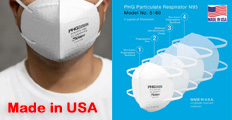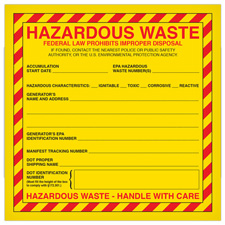



Find all of your laboratory and workplace safety supplies at Safety Emporium!
 IUPAC |
 Glossary Index |
 Ketone |
| MSDS Topics |
Free Sites | FAQ's | Regulations | Glossary | Software | Suppliers |
| Books | Forum | Poll | Fun stuff | Quiz | Store | |
| Understand your MSDS with the MS-Demystifier | Search ALL our MSDS info | |||||
Jaundice is a condition marked by a yellowish color to the skin and the whites of the eyes.
Jaundice is a sign of hyperbilirubinemia a high level of bilirubin (a substance that comes from the natural breakdown of the heme portion of hemoglobin) in the body. Typical causes are excessive breakdown of red blood cells or a hepatic (liver) dysfunction.
Excessively high levels of bilirubin are harmful and can cause brain damage, but the cause of the jaundice is usually a larger problem.

Get your hazardous waste labels from Safety Emporium.
There are many underlying causes for jaundice, so treatments may vary. Typical causes include hepatitis, obstructive jaundice (blockage of the bile ducts of the liver, perhaps by gallstones), or cirrhosis of the liver (often caused by chronic drinking, but not always). People with Gilbert's Syndrome (pronounced "zheel-BAYRS") may suffer occasional bouts of jaundice, but this is a benign condition that does not require treatment; see Further Reading below for more information.
More than half of newborn infants experience neonatal jaundice, a condition that usually clears up on its own as the baby's liver function develops in the first few days of life. One effective treatment for neonatal (newborn infant) hyperbilirubinemiais (jaundice) is called phototherapy, where the patient is put under special fluorescent lamps to help break down the excess bilirubin. This can be done at home with supervision or on an outpatient basis.
Jaundice is a general symptom of impaired liver function. Occupational exposure to chemicals such as chloroform and other solvents can negatively affect liver function and lead to hepatitis. OSHA has singled out 4,4'-Methylenedianiline (MDA) as a substance that can cause cancer and also damage the liver, kidneys, blood, and spleen with long term exposure.
Therefore, always be sure to study the health risks on your Safety Data Sheets (found on Section 11 (toxicological information) of the sheets) BEFORE using new chemicals. And once you understand the health risks, follow the recommendations on the SDS to minimize your exposure to such agents using engineering controls (such as fume hoods and ventilation) as well as proper personal protective equipment (gloves, goggles, respirators etc.).
See also: hepatic.
Additional definitions from Google and OneLook.
Entry last updated: Monday, January 2, 2023. This page is copyright 2000-2025 by ILPI. Unauthorized duplication or posting on other web sites is expressly prohibited. Send suggestions, comments, and new entry desires (include the URL if applicable) to us by email.
Disclaimer: The information contained herein is believed to be true and accurate, however ILPI makes no guarantees concerning the veracity of any statement. Use of any information on this page is at the reader's own risk. ILPI strongly encourages the reader to consult the appropriate local, state and federal agencies concerning the matters discussed herein.